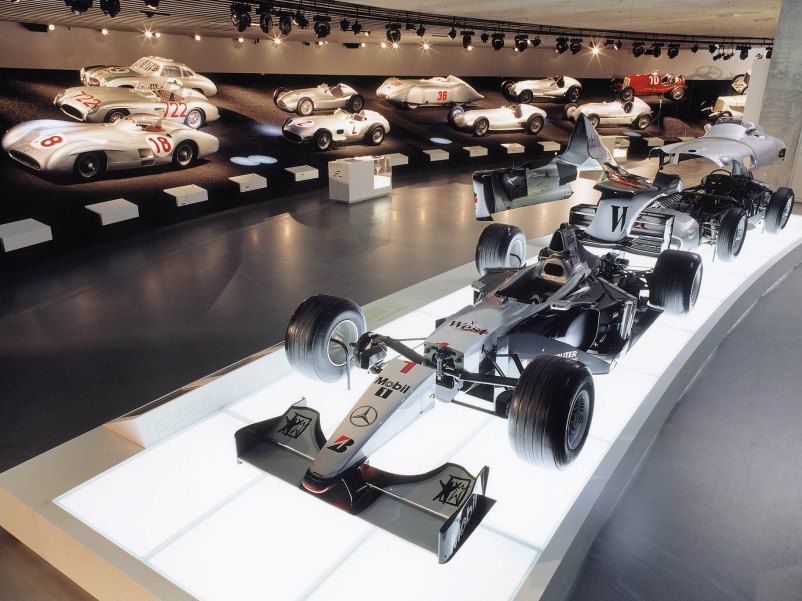Recent Articles
Popular Makes
Body Types
Mercedes-Benz Museum Stuttgart Tour Review
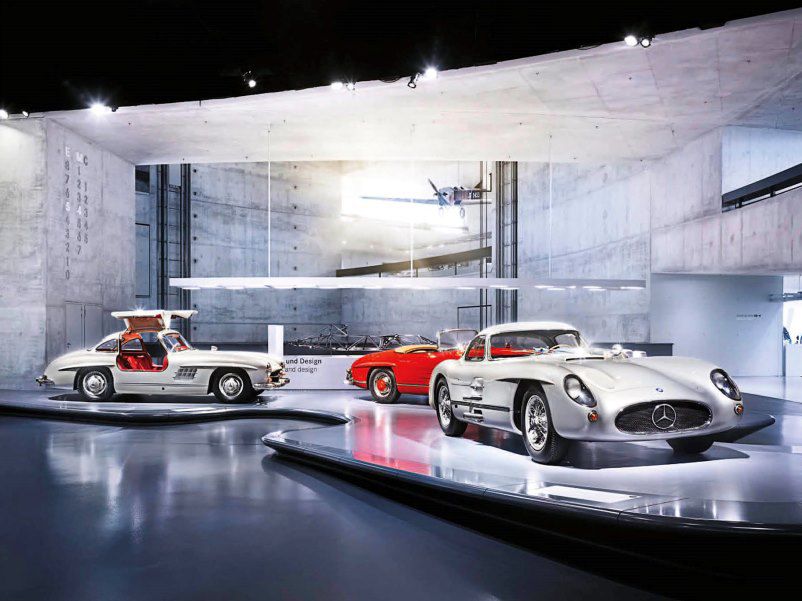
mercedes1950sracecarsMercedes Benz300SLRUhlenhautCoupé
A horse, a Popemobile, a tornado. I discovered all three of this unusual grouping during a recent tour of the remarkable Mercedes-Benz Museum in Stuttgart, Germany.
The automaker correctly points out that its museum is the only one in the world that can document, in a single continuous timeline, over 125 years of automobile history from its very beginnings to the present day. It is truly an impressive achievement, all contained within 178,000 square feet of exhibits sheltered inside a dramatic nine-story concrete and glass building in the heart of the industrial city.
Architecture
Self-guided tours start in the lobby, where visitors enter a tall atrium that reveals the stunning architecture designed by the UNStudio of Amsterdam architects van Berkel and Bos. The staggered open floors and swirling walls were inspired by the double helix structure of the DNA spiral that carries the human genome, and Mercedes-Benz explains that the design illustrates the brand’s philosophy: to continuously create radically new products to advance the cause of human mobility.
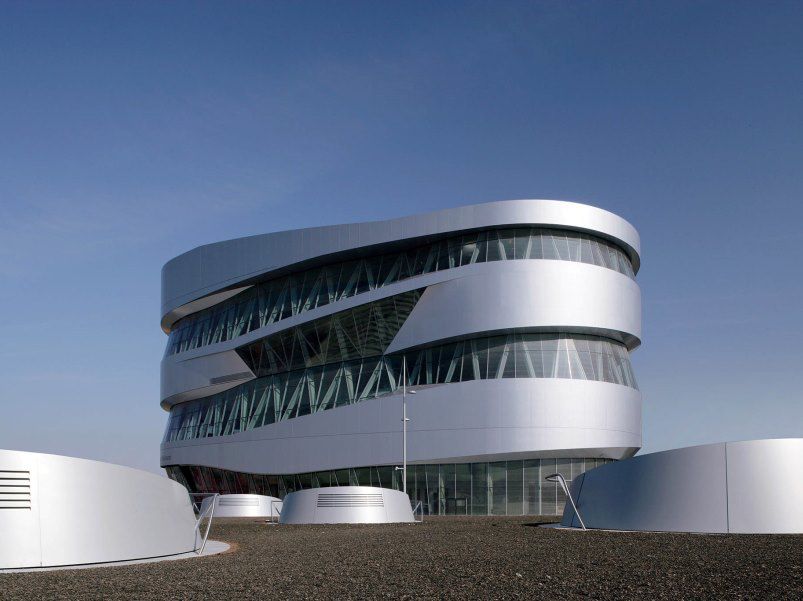
Back in Time
Visitors board futuristic elevator pods to ascend the walls to the top floor of the museum. This effectively takes museum guests back in time as, moments later, the elevator’s sliding doors open to reveal exhibits from 1886 and the genesis of the history of Mercedes-Benz. The walking tour spirals downward through hundreds of displays of art, engines, ships, aircraft, trucks, and vehicles, each step advancing guests forward through history as they follow narrow hallways that emerge into large, themed collection rooms. Eventually, after about two hours of leisurely browsing through an amazing heritage, visitors reach the ground floor of the museum and displays that offer insight into the automaker’s future.

The First Automobile
Mercedes-Benz is credited with developing the world’s first automobile — a perfect replica of that Benz Patent-Motorwagen is displayed on the top floor — but the museum’s accompanying narrative does not boast of or even claim superiority. Instead, guests embark on a tour that wonderfully illustrates the transportation environment throughout motorized time and how vehicles evolved from their first rudimentary designs into fairly reliable contraptions. The car did not happen overnight, and the museum’s fascinating displays offer studies of both the German automaker as well as the social forces that shaped the automobile. (To its credit, the museum deals with the horrors of WWII and its affect on the industry in an honest and forthright manner.)

1950’s Race Cars
My favorite exhibits remain the unbelievably fast, and extremely dangerous, race cars of the 1950s. At the top of that list is the silver Mercedes-Benz 300 SLR Uhlenhaut Coupé, named after Mercedes-Benz engineer Rudolf Uhlenhaut. The 2,462-pound two-seater is fitted with a 3.0-liter inline eight making 310 horsepower. Uhlenhaut would reportedly blast to and from work in the 300 SLR, at upwards of 178 mph on the Autobahn (which had far less traffic on its paved surfaces in those days), its minimal silencers having little effect on the engine’s tremendous racket.
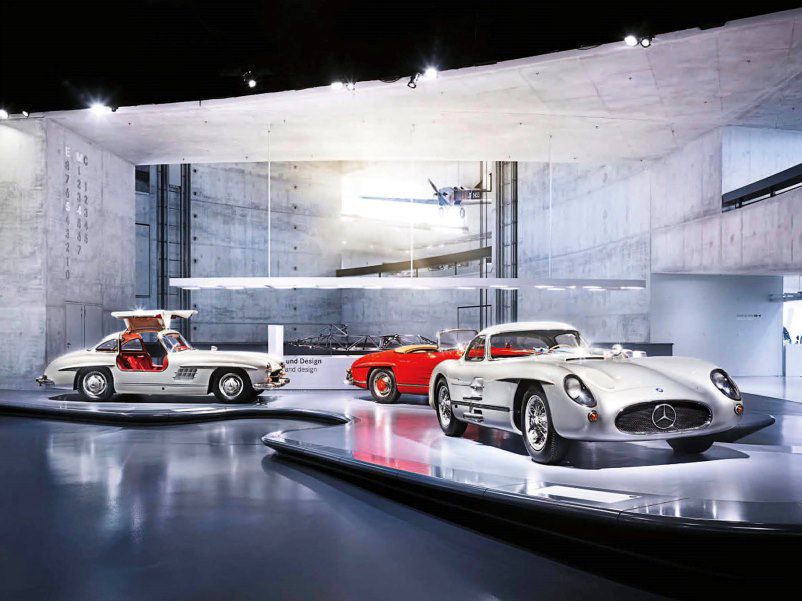
Mercedes-Benz T80 Display
My 16-year-old son was fascinated with the Mercedes-Benz T80, a sleek six-wheeled vehicle designed in 1939 by Ferdinand Porsche to break the world speed record — its target speed was nearly 470 mph! Silly, you say? Hidden within its aluminum bodywork is a 44.5-liter V12, derived from the engine that powered the Messerschmitt Bf 109 fighter of the time, and that one developed over 3,000 horsepower. World War II, of course, pulverized that dream; it never made a record run.
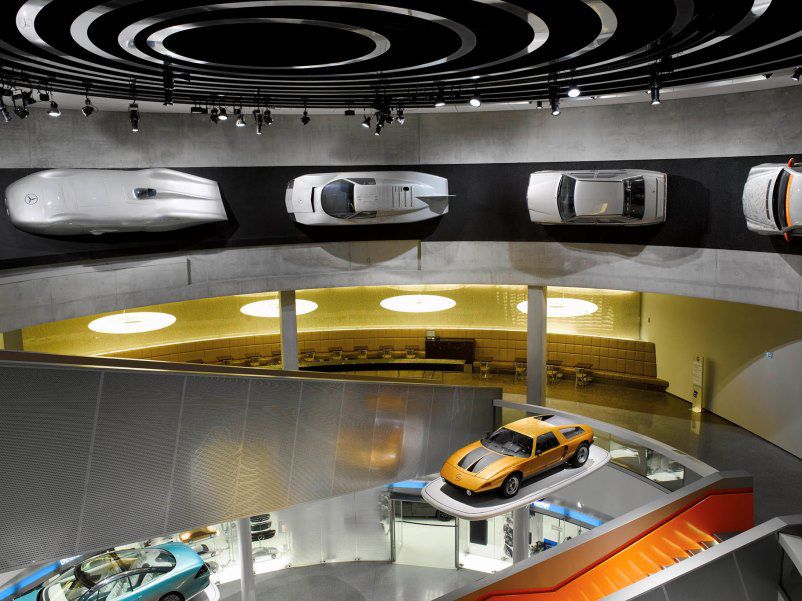
Simply Breathtaking
Well organized and deeply eclectic, the museum includes a stuffed horse, serenely representing transportation before motorized vehicles. A few floors below sits the Popemobile that was used by John Paul II. Based on the Mercedes-Benz 230 G, there’s little grace in the large clear protective canopy for its prized passenger and the gaudy gold-plated wheels. And the tornado I mentioned? That’s not a vehicle but the fascinating method designed by the building’s engineers to evacuate smoke in the rare event of a fire. Dozens of air jets in the tall atrium would rapidly circulate its air into a vortex, and a large circular exhaust fan on the ceiling would then funnel the fire’s smoke outward to the sky. Want to check it out? Look up at the ceiling and walls as you wait for your elevator pod.
This was my third visit to the Mercedes-Benz Museum, and I still don’t feel as if I have spent enough time within its breathtaking dimensions (plan at least two hours for a visit, an allotment that will provide for just a cursory overview). I’m determined to stand in that hall again to take in more of its wonders… next time.
